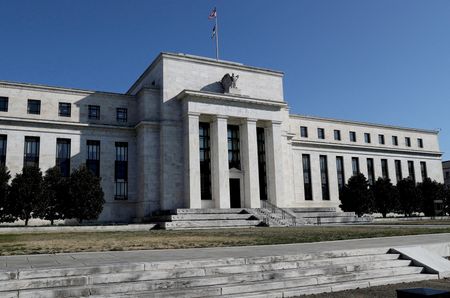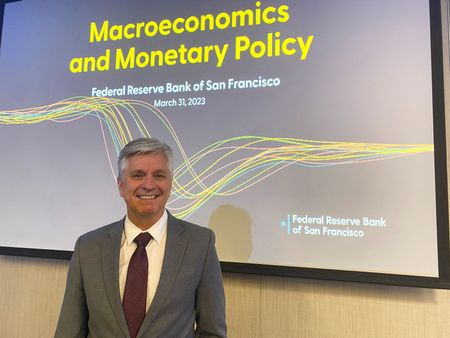By Howard Schneider and Ann Saphir
WASHINGTON (Reuters) – Economic data has begun to fill in the portrait of a U.S. economy that is losing momentum, with reports over the last seven days showing job growth, inflation, factory output and consumer spending all slowing down.
The combined impact hasn’t caused Federal Reserve officials to call a halt to further rate increases, with policymakers still seen likely next month to raise the benchmark overnight interest rate by a quarter of a percentage point to the 5.00%-5.25% range, which would be the highest since the onset of the global financial crisis in 2007.
But it is beginning to intensify debate over whether the U.S. central bank’s next increase will be its last in an aggressive tightening cycle that finally may have begun to show its teeth. Financial markets are betting on this ‘one and done’ scenario.
“Let’s just be mindful that we’ve raised a lot, it takes time for that to work its way through the system,” Chicago Fed President Austan Goolsbee said in an interview with CNBC on Friday after new data showed U.S. retail sales fell 1% in March, a far bigger drop than expected by economists in a Reuters poll.
“With this retail sales number we are maybe seeing a little bit of that lag and if you had financial stress on top of that, let’s not be too aggressive,” with rate increases, Goolsbee said, referring to the possibility that the recent failure of two regional U.S. banks may add a deeper credit crunch on top of the anticipated impact of higher Fed policy rates.
The retail sales data provided at least a hint that a pandemic-era spending boom may be nearing an end, though some economists argued that the historically low unemployment rate and rising wages make a sharp drop in consumption unlikely.
In separate comments, Fed Governor Christopher Waller said he’d seen little evidence yet that the economy was under stress, little progress on inflation, and no reason to call off further rate increases.
“I would welcome signs of moderating demand, but until they appear and I see inflation moving meaningfully and persistently down toward our 2% target, I believe there is still work to do,” Waller said, anchoring the argument that high inflation remains the Fed’s chief antagonist at this point.
The current inflation rate is more than twice that target, and progress on getting it to move in that direction has been slow. Indeed, the release of the University of Michigan’s bi-monthly sentiment pulse-taking on Friday showed the headwinds the Fed faces on that front and bolstered the argument against pausing the tightening cycle.
The data showed households expected inflation to accelerate significantly in the year ahead, reversing months of progress towards them viewing inflation as a receding phenomenon. The survey’s one-year inflation expectation has jumped a full percentage point in April to 4.6% from a late-March reading of 3.6% – the largest monthly increase since May 2021 when inflation was just beginning to take root.
But even Waller acknowledged the Fed will need to keep a close eye on financial and economic data in coming weeks, particularly for evidence of what he called any “abrupt” shift in lending standards that may reflect banks cracking down on credit beyond what policymakers feel is needed to slow inflation.
‘CLOSER TO THE END’
Economic data beyond retail sales is showing some evidence of a slowdown – enough even that Fed staff ahead of the central bank’s March 21-22 policy meeting projected a “mild recession” beginning later this year.
New data over the past week showed manufacturing output fell in March, the headline rate of price increases tumbled, import costs declined, and the margins added by businesses to their final prices fell fast – a dynamic some economists argue could deliver a major blow to overall inflation rates.
The 236,000 jobs added by U.S. employers last month would have been considered robust in the years before the pandemic, but it marked the smallest gain since December 2020 and a move toward what’s now expected to be a steady drift down in monthly employment growth.
There won’t be much more topline economic data before the Fed’s May 2-3 meeting.
However, weekly statistics on bank borrowing and lending could figure into the debate, as will a quarterly survey of bank lending officers that Fed officials will be able to review at their meeting before it is publicly released the following week.
In a Reuters interview on Thursday, Atlanta Fed President Raphael Bostic said he was encouraged by recent inflation trends, and felt a single further rate increase would let the Fed “hit the mark and hold” at a level that will cause inflation to decline over time.
Absent large surprises in the banking, inflation or economic data, “they are feeling like they are getting closer to the end” of the rate hiking cycle, said Scott Anderson, the chief economist at Bank of the West.
(Reporting by Howard Schneider; Editing by Paul Simao)






